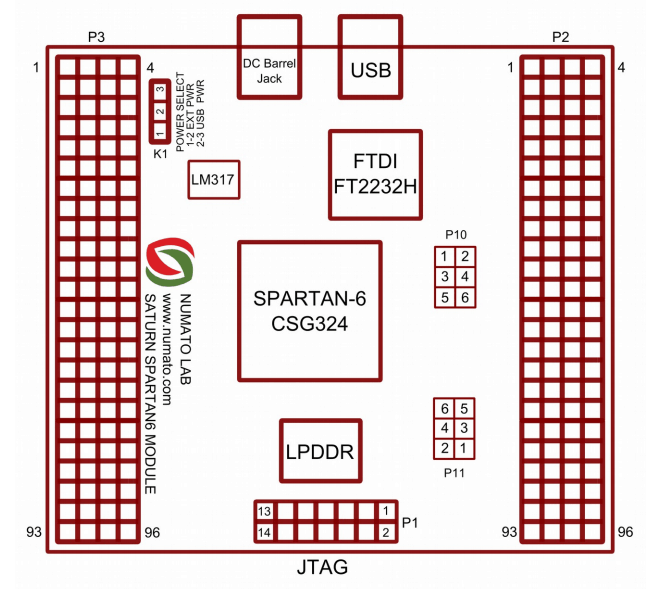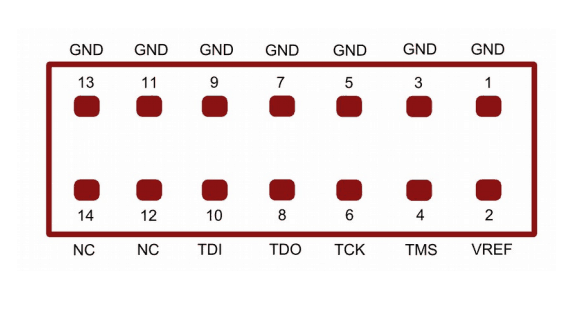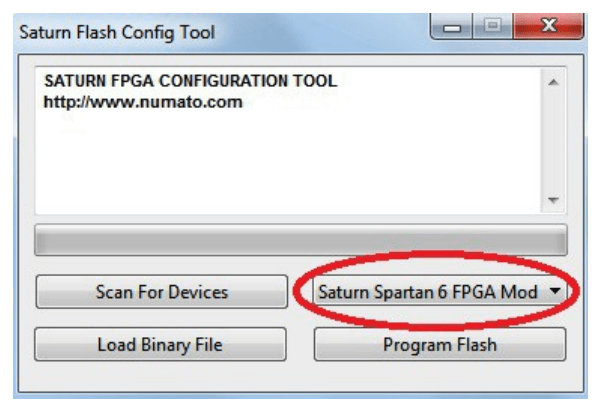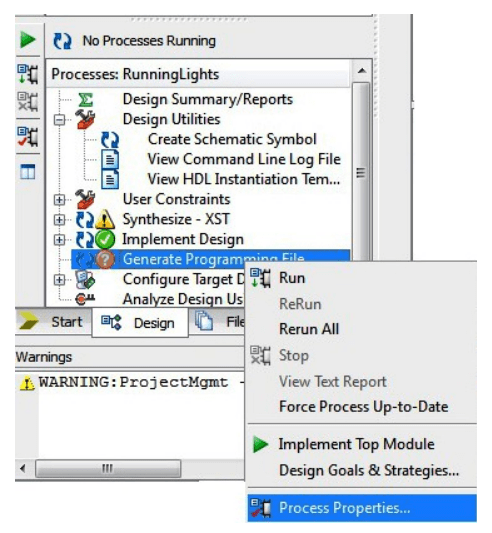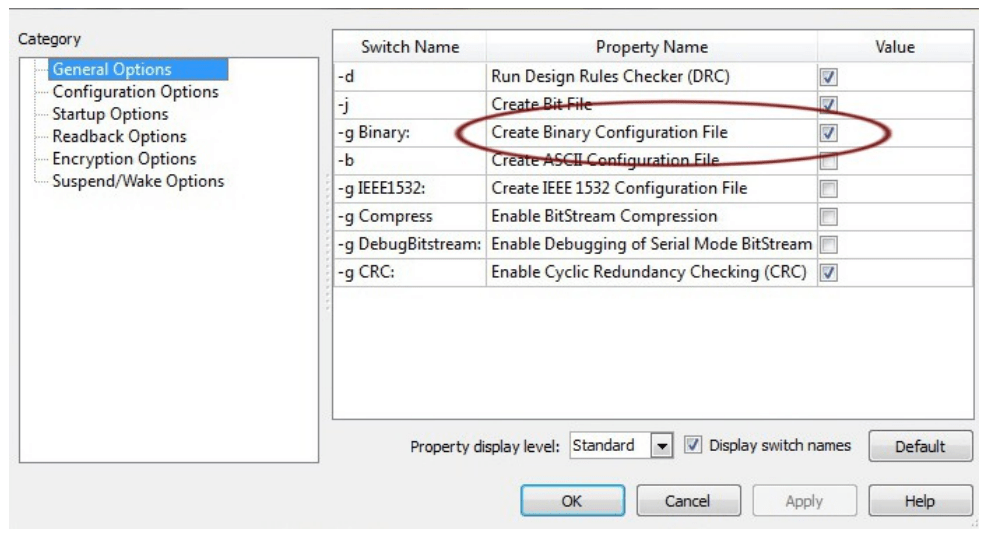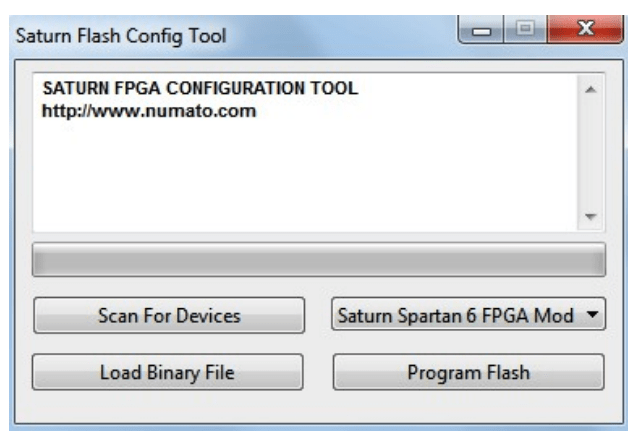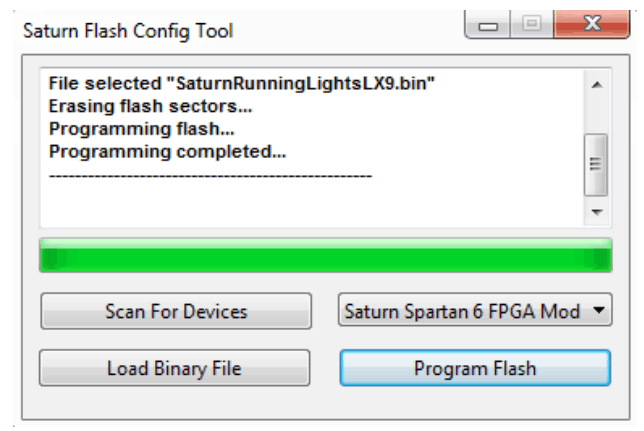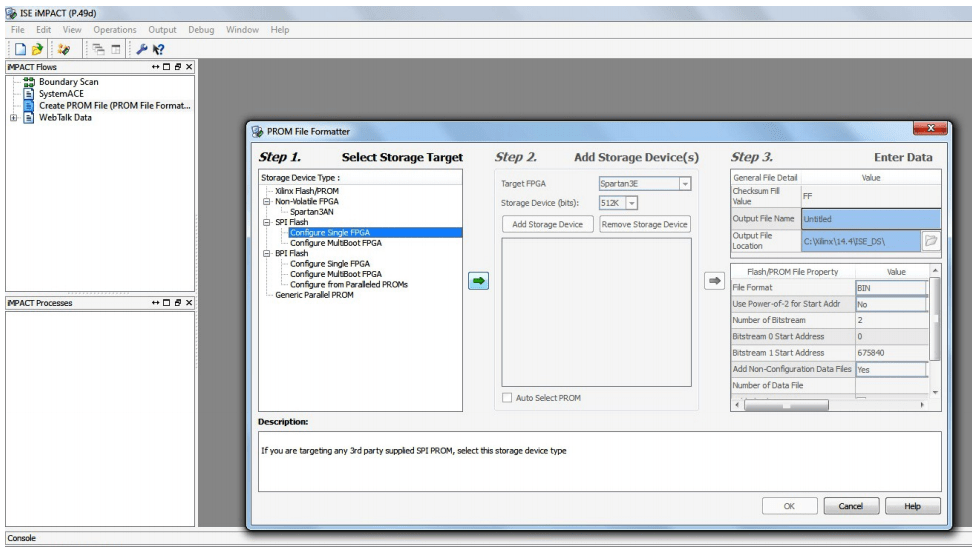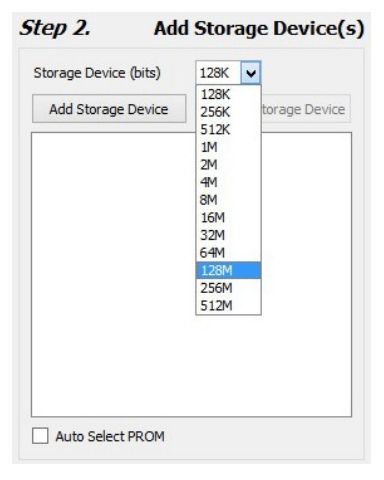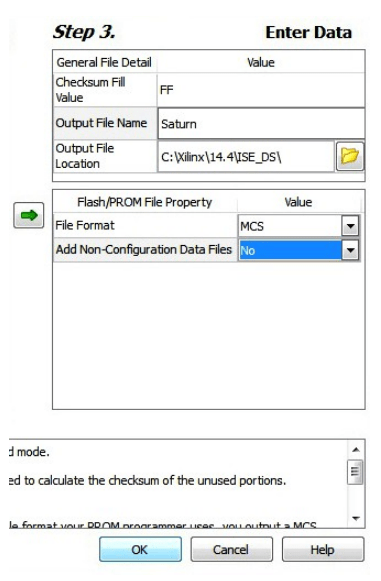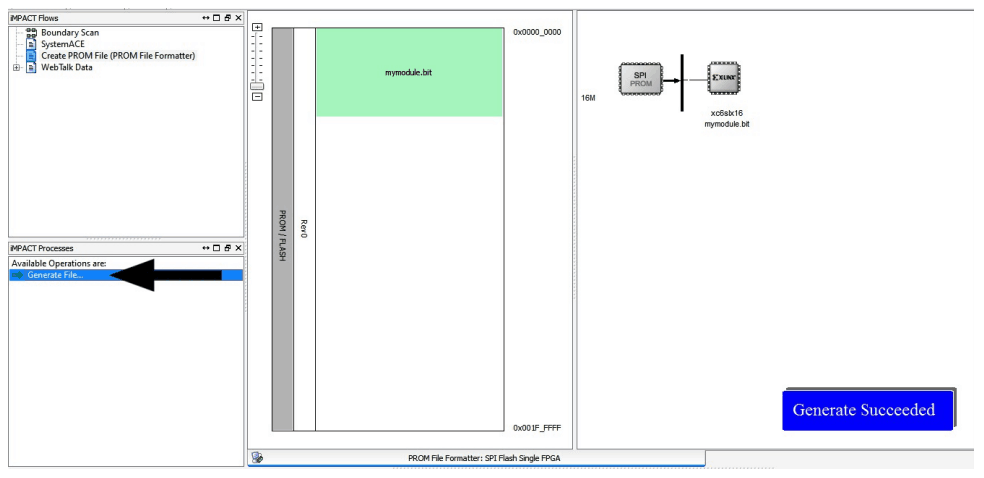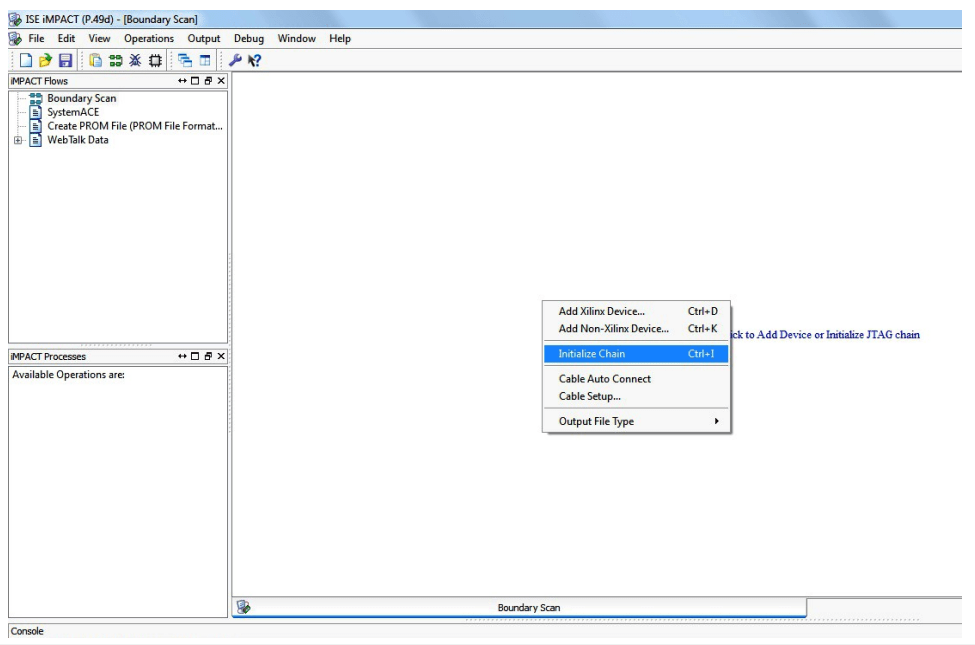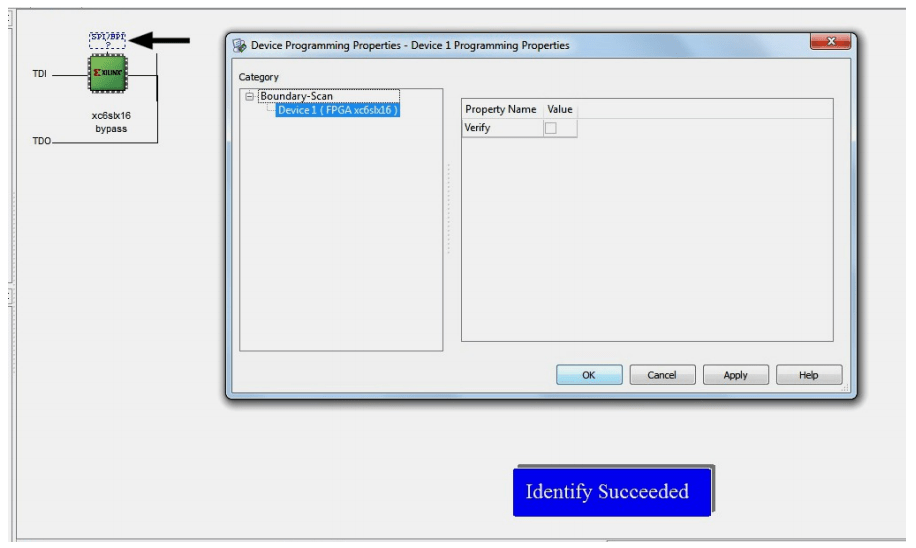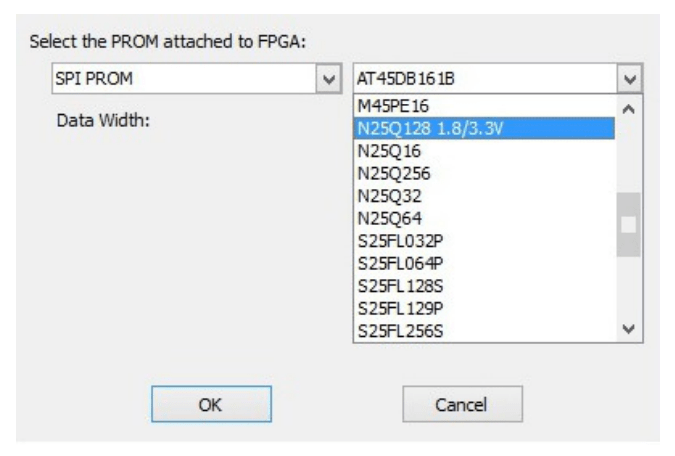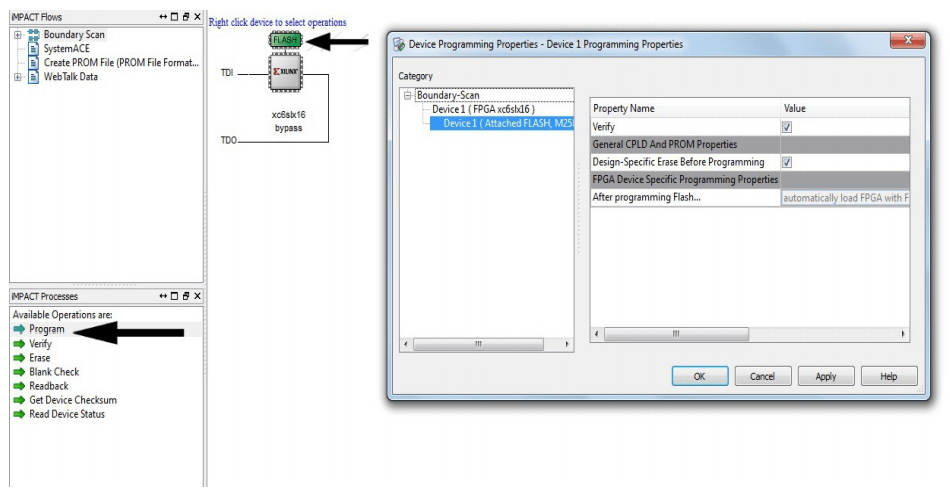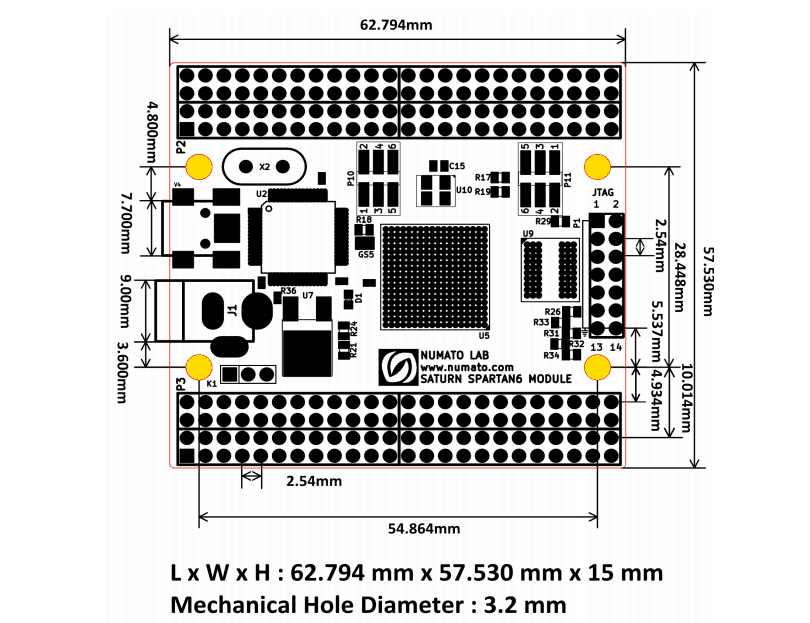Introduction
Saturn is an easy to use FPGA Development board featuring Xilinx Spartan-6 FPGA. Saturn is specially designed for experimenting and learning system design with FPGAs. This development board features the Xilinx XC6SLX series FPGA with FTDI’s FT2232H Dual-Channel USB device. The high-speed USB 2.0 interface provides fast and easy configuration download to the on-board SPI flash. No programmer or special downloader cable is needed to download the bitstream to the board.
Applications
- Product Prototype Development
- Development and testing of custom embedded processors
- Signal Processing
- Communication devices development
- Educational tool for Schools and Universities
Board features
- FPGA: Spartan-6 XC6SLX9, LX16, LX25 or LX45 in CSG324 package
- DDR: 166MHz 512Mb LPDDR
- Flash memory: 128 Mb SPI flash memory (N25Q128A13ESE40E)
- 100MHz CMOS oscillator
- High-Speed USB 2.0 interface for On-board flash programming. FT2232H Channel A is dedicated to SPI Flash /JTAG Programming. Channel B can be used for custom applications.
- On-board voltage regulators for single power rail operation
- FPGA configuration via JTAG and USB
- Maximum 158 IOs for user-defined purposes XC6SLX9 – 118 IOs XC6SLX16 – 150 IOs XC6SLX25 – 144 IOs XC6SLX45 – 136 IOs FT2232H – 8 IOs
How to Use Saturn Spartan 6 FPGA Development Board With DDR SDRAM
Components/Tools Required
Along with the module, you may need the items in the list below for easy and fast installation.
1. USB A to Mini B cable.
2. DC Power supply (Optional).
USB Interface
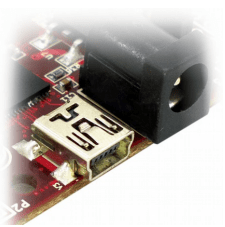 The onboard full-speed USB controller helps a Windows/Linux/Mac computer to communicate with this module. Use a USB A to Mini B cable to connect with a PC. By default, the module is powered from USB so make sure not to overcrowd unpowered USB hubs (the picture on the right shows USB Mini connector).
The onboard full-speed USB controller helps a Windows/Linux/Mac computer to communicate with this module. Use a USB A to Mini B cable to connect with a PC. By default, the module is powered from USB so make sure not to overcrowd unpowered USB hubs (the picture on the right shows USB Mini connector).
DC Power Supply
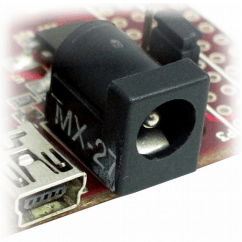 This module uses a +5V power supply to function properly. By default, the board is configured to use the +5V supply from USB. So an external +5V power is not required unless the USB port is unable to supply enough current. In most cases, USB ports are capable of providing enough current for the module. The current requirement for this board largely depends on your application. Please consult the FPGA datasheet for more details on power requirements. If for any reason, an external 5V power supply needs to be used for the module, the Power select jumper should be configured properly before connecting the power supply. Please refer to the marking on the board for more details.
This module uses a +5V power supply to function properly. By default, the board is configured to use the +5V supply from USB. So an external +5V power is not required unless the USB port is unable to supply enough current. In most cases, USB ports are capable of providing enough current for the module. The current requirement for this board largely depends on your application. Please consult the FPGA datasheet for more details on power requirements. If for any reason, an external 5V power supply needs to be used for the module, the Power select jumper should be configured properly before connecting the power supply. Please refer to the marking on the board for more details.
Power Select
The Power Select header K1 is used to configure the power source for the board. The jumper in pin 2 and 3 is shorted to switch the power source to on board USB port and pin 1 and 2 to use the external DC power.
JTAG/SPI Configuration On FT2232H Channel A
Channel A of FT2232H can be connected to the SPI bus that connects the SPI Flash chip to the FPGA or to the JTAG pins of the FPGA. By connecting SPI bus to FT2232H channel A, the SPI flash can be directly programmed to save the configuration permanently. This is the default configuration set when Saturn is shipped. When FT2232H channel A is connected to SPI, Saturn Configuration Downloader utility can be used to program the board.
When FT2232H channel A is connected to FPGA JTAG, the JTAG signals can be accessed directly through FT2232H. Saturn Configuration Downloader utility currently does not support programming FPGA SRAM through JTAG.
Please see the tables below for information about selecting SPI or JTAG for FT2232H channel A. SPI must be selected for Saturn Configuration Downloader utility to work.
Header P10
| Jumper Configration for SPI | Jumper Configration for JTAG |
|---|---|
| 1 - 2 | 2 - 4 |
| 5 - 6 | 3 - 5 |
Header P11
| Jumper Configration for SPI | Jumper Configration for JTAG |
|---|---|
| 1 - 2 | 2 - 4 |
| 5 - 6 | 3 - 5 |
Important: These jumper settings are only meant for accessing the JTAG signals via FT2232H through USB using programs such as xc3sprog. If you are using external JTAG such as Xilinx Platform Cable USB II connected to the JTAG header, then please do not change these jumpers. They should be in the factory-shipped SPI configuration. If the jumpers are changed to JTAG mode, and an external JTAG is used, then the external JTAG will not work.
GPIOs
This device is equipped with a maximum 158 user IO pins that can be used for various custom applications. Out of 158 user IOs 56 are length matched which can be used as differential pairs.
Header P3
| Pin No. On The Header | Spartan-6 (CSG324) Pin No. | Pin No. On The Header | Spartan-6 (CSG324) Pin No. |
|---|---|---|---|
| 1 | GND | 2 | 3V3 |
| 3 | VCCIN | 4 | GND |
| 5 | G13 | 6 | H12 |
| 7 | K14 | 8 | J13 |
| 9 | H16 | 10 | H15 |
| 11 | H14 | 12 | H13 |
| 13 | G14 | 14 | F14 |
| 15 | G18 | 16 | G16 |
| 17 | F16 | 18 | F15 |
| 19 | F18 | 20 | F17 |
| 21 | E18 | 22 | E16 |
| 23 | D18 | 24 | D17 |
| 25 | C18 | 26 | C17 |
| 27 | A16 | 28 | B16 |
| 29 | A15 | 30 | C15 |
| 31 | C14 | 32 | D14 |
| 33 | A14 | 34 | B14 |
| 35 | E13 | 36 | F13 |
| 37 | A13 | 38 | C13 |
| 39 | E12 | 40 | F12 |
| 41 | C12 | 42 | D12 |
| 43 | A12 | 44 | B12 |
| 45 | E11 | 46 | F11 |
| 47 | C11 | 48 | D11 |
| 49 | GND | 50 | GND |
| 51 | GND | 52 | GND |
| 53 | F10 | 54 | G11 |
| 55 | A11 | 56 | B11 |
| 57 | A10 | 58 | C10 |
| 59 | F9 | 60 | G9 |
| 61 | C9 | 62 | D9 |
| 63 | A9 | 64 | B9 |
| 65 | F8 | 66 | G8 |
| 67 | E8 | 68 | E7 |
| 69 | C8 | 70 | D8 |
| 71 | A8 | 72 | B8 |
| 73 | E6 | 74 | F7 |
| 75 | A7 | 76 | C7 |
| 77 | A6 | 78 | B6 |
| 79 | C6 | 80 | D6 |
| 81 | A5 | 82 | C5 |
| 83 | A4 | 84 | B4 |
| 85 | A3 | 86 | B3 |
| 87 | A2 | 88 | B2 |
| 89 | GND | 90 | GND |
| 91 | GND | 92 | GND |
| 93 | 3V3 | 94 | 3V3 |
| 95 | 3V3 | 96 | 3V3 |
Header P2
| Pin No. On The Header | Spartan-6 (CSG324) Pin No. | Pin No. On The Header | Spartan-6 (CSG324) Pin No. |
|---|---|---|---|
| 1 | ACBUS0* | 2 | ACBUS1 |
| 3 | 3V3 | 4 | GND |
| 5 | ACBUS2 | 6 | ACBUS3 |
| 7 | K12 | 8 | K13 |
| 9 | ACBUS4 | 10 | ACBUS5 |
| 11 | L14 | 12 | M13 |
| 13 | ACBUS6 | 14 | ACBUS7 |
| 15 | M14 | 16 | N14 |
| 17 | L12 | 18 | L13 |
| 19 | L15 | 20 | L16 |
| 21 | K15 | 22 | K16 |
| 23 | N15 | 24 | N16 |
| 25 | T17 | 26 | T18 |
| 27 | P15 | 28 | P16 |
| 29 | U16 | 30 | V16 |
| 31 | U17 | 32 | U18 |
| 33 | T14 | 34 | V14 |
| 35 | U15 | 36 | V15 |
| 37 | T12 | 38 | V12 |
| 39 | U13 | 40 | V13 |
| 41 | R11 | 42 | T11 |
| 43 | M11 | 44 | N11 |
| 45 | GND | 46 | GND |
| 47 | GND | 48 | GND |
| 49 | GND | 50 | GND |
| 51 | GND | 52 | GND |
| 53 | N10 | 54 | P11 |
| 55 | U11 | 56 | V11 |
| 57 | R10 | 58 | T10 |
| 59 | M10 | 60 | N9 |
| 61 | T9 | 62 | V9 |
| 63 | R8 | 64 | T8 |
| 65 | N7 | 66 | P8 |
| 67 | M8 | 68 | N8 |
| 69 | U7 | 70 | V7 |
| 71 | U8 | 72 | V8 |
| 73 | R7 | 74 | T7 |
| 75 | N6 | 76 | P7 |
| 77 | N5 | 78 | P6 |
| 79 | T6 | 80 | V6 |
| 81 | R5 | 82 | T5 |
| 83 | U5 | 84 | V5 |
| 85 | R3 | 86 | T3 |
| 87 | T4 | 88 | V4 |
| 89 | INITB | 90 | 3V3 |
| 91 | PROGB | 92 | 3V3 |
| 93 | GND | 94 | GND |
| 95 | GND | 96 | GND |
No Connect Pins In LX9(CSG324)
| SL No. | Pin No On The Header P3 | Spartan-6 (CSG324) |
|---|---|---|
| 1 | 37 | A13 |
| 2 | 38 | C13 |
| 3 | 39 | E12 |
| 4 | 40 | F12 |
| 5 | 41 | C12 |
| 6 | 42 | D12 |
| 7 | 45 | E11 |
| 8 | 46 | F11 |
| 9 | 53 | F10 |
| 10 | 54 | G11 |
| 11 | 65 | F8 |
| 12 | 66 | G8 |
| 13 | 67 | E8 |
| 14 | 68 | E7 |
| 15 | 73 | E6 |
| 16 | 74 | F7 |
| SL No. | Pin No On The Header P2 | Spartan-6 (CSG324) |
| 1 | 35 | U15 |
| 2 | 36 | V15 |
| 3 | 37 | T12 |
| 4 | 38 | V12 |
| 5 | 43 | M11 |
| 6 | 44 | N11 |
| 7 | 53 | N10 |
| 8 | 54 | P11 |
| 9 | 59 | M10 |
| 10 | 60 | N9 |
| 11 | 65 | N7 |
| 12 | 66 | P8 |
| 13 | 67 | M8 |
| 14 | 68 | N8 |
| 15 | 75 | N6 |
| 16 | 76 | P7 |
No Connect Pins In LX25 (CSG324)
| SL No. | Pin No On The HeaderP3 | Spartan-6 (CSG324) |
|---|---|---|
| 1 | 65 | F8 |
| 2 | 66 | G8 |
| 3 | 67 | E8 |
| 4 | 68 | E7 |
| 5 | 73 | E6 |
| 6 | 74 | F7 |
No Connect Pins In LX45(CSG324)
| SL No. | Pin No On The Header P3 | Spartan-6 (CSG324) |
|---|---|---|
| 1 | 39 | E12 |
| 2 | 40 | F12 |
| 3 | 41 | C12 |
| 4 | 42 | D12 |
| 5 | 45 | E11 |
| 6 | 46 | F11 |
| 7 | 53 | F10 |
| 8 | 54 | G11 |
| 9 | 65 | F8 |
| 10 | 66 | G8 |
| 11 | 67 | E8 |
| 12 | 68 | E7 |
| 13 | 73 | E6 |
| 14 | 74 | F7 |
FT2232H – Spartan-6 (CSG324) FPGA Connection Details
| FTDI Pin No. | Pin Function (245 FIFO) | Spartan-6 Pin No. |
|---|---|---|
| 38 | D0 | L17 |
| 39 | D1 | L18 |
| 40 | D2 | M16 |
| 41 | D3 | M18 |
| 43 | D4 | N17 |
| 44 | D5 | N18 |
| 45 | D6 | P17 |
| 46 | D7 | P18 |
| 48 | RXF# | K18 |
| 52 | TXE# | K17 |
| 53 | RD# | J18 |
| 54 | WR# | J16 |
| 55 | SIWUB | H18 |
Driver Installation
Installing on Windows
This product requires a driver to be installed for proper functioning when used with Windows. The D2XX driver can be downloaded from http://www.ftdichip.com/Drivers/D2XX.htm. Windows Users have to run the CDM v2.08.30 WHQL Certified.exe application that will prompt them to install the FTDI CDM drivers. When the driver installation is complete, the module should appear in Saturn Flash Config Tool as Saturn Spartan 6 FPGA Module (see the picture).
Generating Bit Stream for Saturn
HDL design needs to be converted to bit stream before it can be programmed to FPGA. Saturn at this time accepts only binary (.bin) bit stream created by XILINX ISE (http://www.xilinx.com/tools/webpack.htm). Once the HDL is synthesized, it is easy to create a binary bit stream out of it. Please follow the steps below to generate binary bit stream from your design using ISE Web Pack.
Step 1: Right click on the “Generate Programming File” option in “Processes” window.
Step 2: Select “Process Properties” from the pop up menu. In the dialog box, check “Create Binary Configuration File” Check box and click “Apply”.
Step 3: Click “OK” to close the dialog box. Right click on “Generate Programming File” option again and select “Run”. Now you will be able to find a “.bin” file in the project directory and that file can be used for Saturn configuration.
Powering Up Saturn
Saturn is factory configured to be powered directly from the USB port so make sure that you are using a USB port that can power the board properly. It is recommended to connect the board directly to the PC instead of using a hub. It is practically very difficult to estimate the power consumption of the board, as it depends heavily on your design and the clock used. XILINX provides tools to estimate power consumption. In any case, if power from USB is not enough for your application, external supply can be applied to the board. Jumper PWRSEL should be set up properly (short pin 1-2) to use the board on external power. Saturn requires three different voltages, a 3.3V supply, a 1.8V supply, and a 1.3V supply. Onboard regulators derive these voltages from the USB/Ext power supply.
Configuring Saturn Spartan6 Module
The Saturn Spartan6 module can be configured by two methods,
a) Using Spartan configuration tool through USB.
b) Using the Xilinx programming cable.
Configuring Saturn Using Configuration Tool
Saturn has an onboard FTDI FT2232 device which facilitates easy reprogramming of onboard SPI flash through the USB interface. The FTDI receives bitstream from the host application and program it into the SPI Flash and lets the FPGA boot from the flash. The Saturn configuration application can be downloaded from www.numato.com for free.
Step 1: Open Saturn Config Tool. Click “Scan for Devices” if the “Saturn Spartan 6 FPGA Module” is not detected automatically.
Step 2: Click on “Load Binary” Select the “.bin” file, then click on the “Program Flash” button. Wait till “Programming Completed” appears on the screen.
Configuring Saturn Using JTAG
Saturn Spartan6 module features an onboard JTAG connector that facilitates easy reprogramming of SRAM and onboard SPI flash through JTAG programmer like “XILINX Platform-cable usb”. Programming Saturn using JTAG requires “XILINX ISE iMPACT” software which is bundled with XILINX ISE Design Suite. To program the SPI flash, a “.mcs” file needs to be generated from the “.bit” file. Steps for generating the “.mcs” file are as below. Programming FPGA SRAM does not require a “.mcs” file to be generated.
Generating “.mcs” file for Saturn
Step 1: Open ISE iMPACT. Click on “Create PROM file(PROM file formatter)”. In the dialog box, select “Configure Single FPGA” in the storage device type. Then click on the green arrow on the right side.
Step 2: Select 128M in Storage Device (bits).Now click on “Add Storage Device”, then the green arrow on the right side.
Step 3: Set an output file name and the output file location (the “.mcs” file will be generated at this location which will be required later for programming the FPGA), then click OK twice, then select the “.bit” file we already generated then click Open and click NO when it prompts to add another device file.
Step 4: Double click on “Generate File”. “Generate Succeeded” will be displayed as shown in fig below if the “.mcs” the file is generated successfully.
Programming FPGA Using ISE iMPACT
Step 1: Open ISE iMPACT. Click on “Boundary Scan” in the iMPACT flows window on the left top corner. Then right click on the window panel on the right. Select “Initialize Chain”.
Step 2: If the device is detected properly you will get a pop up window as shown below, Click OK. Then right click on the SPI/BPI (next to the black arrow in the below fig.), select Add SPI/BPI Flash.
Step 3: Select the “.mcs” file we already created and click OK. Now choose “N25Q128” in the dialogue box appeared, then click OK.
Step 4: Click on “Flash”, Double Click on Program, select OK. If the programming is successful, a confirmation message will be displayed.
Length Matched GPIOs Pairs
This device is equipped with a maximum of 158 user IOs. Of those, 45 IO pairs are length matched which can be used as differential pairs.
| Pin No. on the Header P3 | Spartan-6 Differential Pair |
|---|---|
| 9-10 | H15-H16 |
| 17-18 | F16-F15 |
| 19-20 | F17-F18 |
| 21-22 | E16-E18 |
| 23-24 | D17-D18 |
| 25-26 | C17-C18 |
| 27-28 | B16-A16 |
| 31-32 | C14-D14 |
| 33-34 | B14-A14 |
| 37-38 | C13-A13 |
| 41-42 | D12-C12 |
| 43-44 | B12-A12 |
| 47-48 | D11-C11 |
| 53-54 | G11-F10 |
| 55-56 | B11-A11 |
| 57-58 | C10-A10 |
| 59-60 | F9-G9 |
| 61-62 | D9-C9 |
| 63-64 | B9-A9 |
| 69-70 | D8-C8 |
| 71-72 | B8-A8 |
| 75-76 | C7-A7 |
| 77-78 | B6-A6 |
| 79-80 | C6-D6 |
| 81-82 | C5-A5 |
| 83-84 | A4-B4 |
| 85-86 | B3-A3 |
| 87-88 | B2-A2 |
| Pin No. on the Header P2 | Spartan-6 Differential Pair |
| 7-8 | K13-K12 |
| 17-18 | L12-L13 |
| 19-20 | L15-L16 |
| 21-22 | K15-K16 |
| 23-24 | N15-N16 |
| 33-34 | T14-V14 |
| 57-58 | R10-T10 |
| 61-62 | T9-V9 |
| 63-64 | R8-T8 |
| 69-70 | U7-V7 |
| 71-72 | U8-V8 |
| 73-74 | R7-T7 |
| 79-80 | T6-V6 |
| 81-82 | R5-T5 |
| 83-84 | U5-V5 |
| 85-86 | R3-T3 |
| 87-88 | T4-V4 |
Technical Specifications
| Parameter * | Value | Unit |
|---|---|---|
| Basic Specifications | ||
| Number of GPIOs | 158 (Max) | |
| On-board oscillator frequency (FXO-HC536R) | 100 | MHz |
| LPDDR Capacity | 512 | Mb |
| LPDDR Clock | 166 | MHz |
| SPI Flash Memory (N25Q128A13ESE40E) | 128 | Mb |
| Power supply voltage (USB or external) | 5 – 6 | V |
| FPGA Specifications | ||
| Internal supply voltage relative to GND | –0.5 to 1.32 | V |
| Auxiliary supply voltage relative to GND | –0.5 to 3.75 | V |
| Output drivers supply voltage relative to GND | –0.5 to 3.75 | V |


